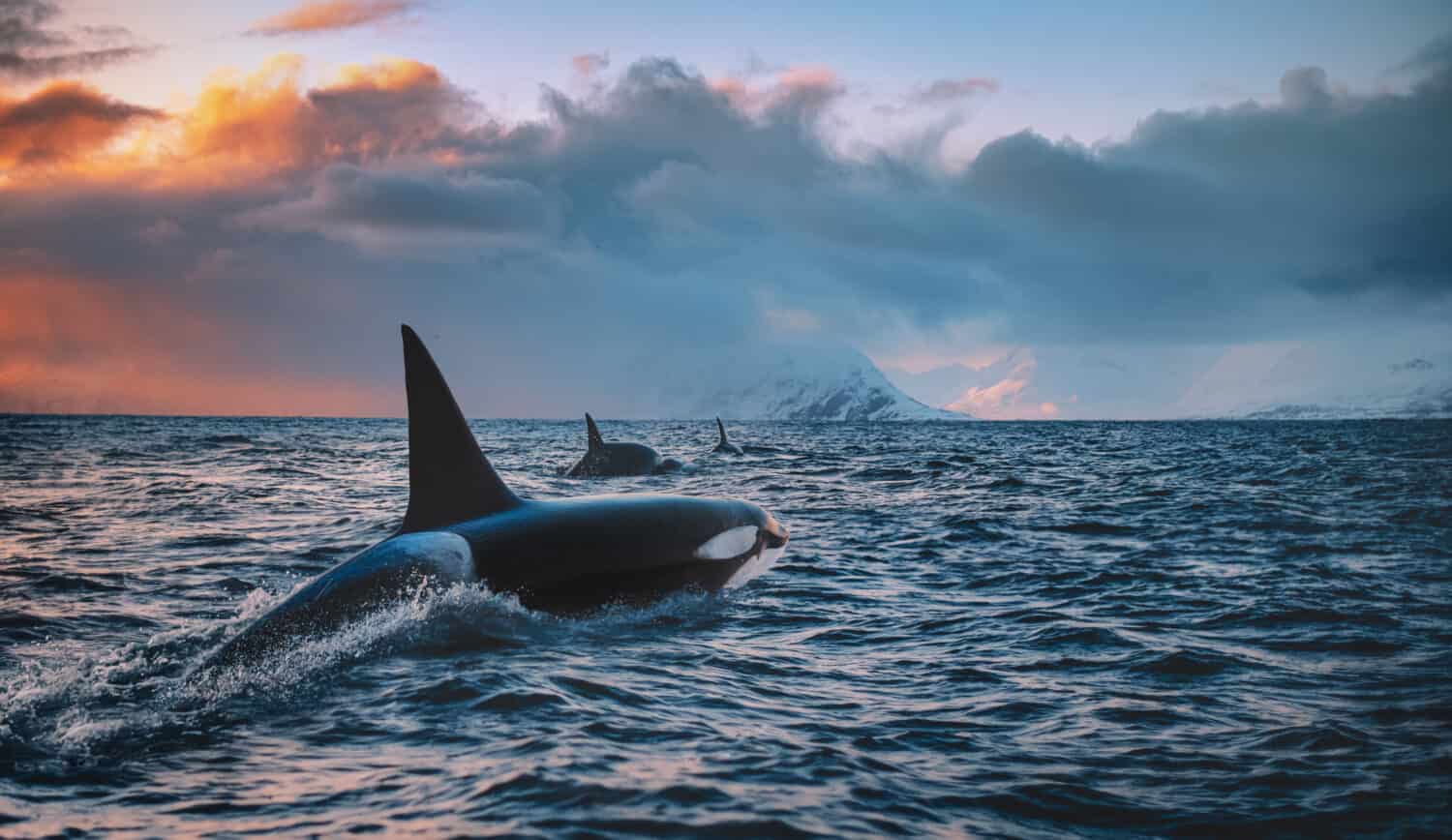Killer whales, also known as orca whales, are intelligent and large marine mammals. Despite their size, some orca whales live in captivity either for entertainment purposes or because of injuries that prevent them from being released back into the ocean. A common question and concern is about orca whales and their dorsal fins. Are their dorsal fins supposed to stay upright? What does it mean when an orca whale’s dorsal fin is curved or floppy? Follow along to discover why some orca dorsal fins collapse.
About Orca Whales
Before we dive into the reasons why some orca dorsal fins collapse, let’s learn about these amazing animals. Orca whales are fascinating and social creatures. They are large marine mammals and members of the Delphinidae family. Killer whales are black and white, with few differences. They are one of the easiest marine mammals to identify. Killer whales camouflage well, which helps them hunt. They have black/grey backs and white underbelly. Orcas also have white eye spots, not directly on their eyes. These large white spots can help orcas identify each other in murky water and protects them from direct eye attacks.
Male orca whales range from 20 to 26 feet long, while females are slightly smaller at 16 to 23 feet. The largest officially recorded orca whale weighed 11 short tons. Young calves are born weighing about 400 pounds. Orca whales have large pectoral fins that resemble paddles and long upright dorsal fins. Males typically have taller dorsal fins that can reach up to 6 feet tall, while female orcas have a more curved dorsal fin.
Orcas aren’t just fascinating for their size and appearance, they are also excellent hunters. These excellent hunters use their amazing sight and hearing to locate prey. They often hunt in groups and live in large pods, taking care of young calves. Sometimes, they hunt without consuming their prey. Orcas move a lot. They often breach, which can be done as a sign of communication, play, or courtship. They travel about 40 miles every day, often swimming in a straight line. Killer whales are also very fast. They have a cruising speed of 3.5 to 4.6 mph. However, in shorter and faster bursts, they can reach speeds up to 35 mph.

Killer whales have many names, including orcas. Male killer whales can measure 20 to 26 feet, although they may grow larger.
©slowmotiongli/Shutterstock.com
Why Some Orca Dorsal Fins Collapse
So, why do some orca whales have collapsed fins? It’s important to know that killer whales in the wild rarely have collapsed fins. Typically, wild orcas with collapsed dorsal fins indicate they are sick, injured, or stressed. In some cases, dorsal fins will revert to their normal stature after they’ve healed.

Some orca whales have collapsed dorsal fins, although most are captive whales.
©slava296/Shutterstock.com
Theory 1: Not Enough Movement/Space
There are a few theories as to why some orca dorsal fins collapse. One theory is that orca whales in captivity don’t have enough space. Orca whales in captivity don’t have enough space to swim quickly or come to the surface as often, which may result in a bent or collapsed fin. However, not enough studies have been done to establish if this is a true cause. Some scientists though believe that the lack of movement from captive killer whales increases the possibility of high blood pressure, which may cause the dorsal fin to bend.
Theory 2: Malnutrition
Another possible theory as to why some orca dorsal fins collapse is malnutrition or dietary changes. When an orca whale doesn’t get enough of the nutrients they need, its tail may collapse or bend from stress. This also includes if their environment is dirty.
Theory 3: Age
Another plausible cause is age. As an orca whale ages and becomes weaker, its dorsal fin may slightly bend or collapse. However, there isn’t enough sufficient data or studies to support this, and like the other possible causes, it’s just a theory.
Theory 4: Injuries
Most experts agree that a killer whale’s dorsal fin bends or weakens mainly due to injuries or sickness. According to one study, 40% of deformed dorsal fins were recorded from orca whales with physical injuries. Interestingly, in the same study, males were more likely to develop a bent or weak fin. These injuries can be from boating accidents or fights between killer whales and other marine animals. However, adult killer whales have no natural predators. They are apex predators that even attack and consume great white sharks.
Are Collapsed Dorsal Fins Common in Wild Orcas?
Collapsed dorsal fins are not common in wild orca whales. Their dorsal fins are made of dense, fibrous connective tissue known as collagen. They don’t have bones that hold up the structure. However, dorsal fins rarely bend or move. They also vary a lot in size.
Thank you for reading! Have some feedback for us? Contact the AZ Animals editorial team.








